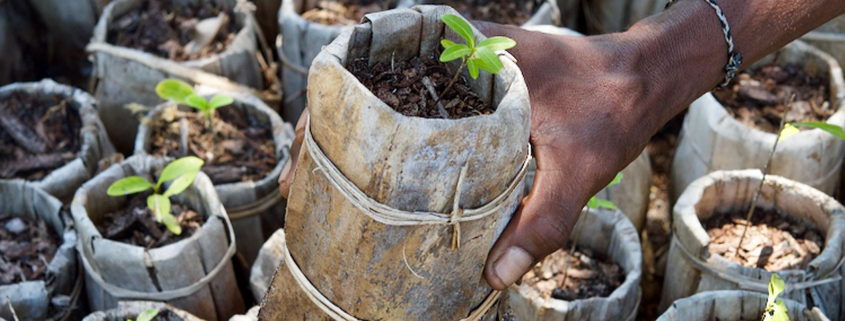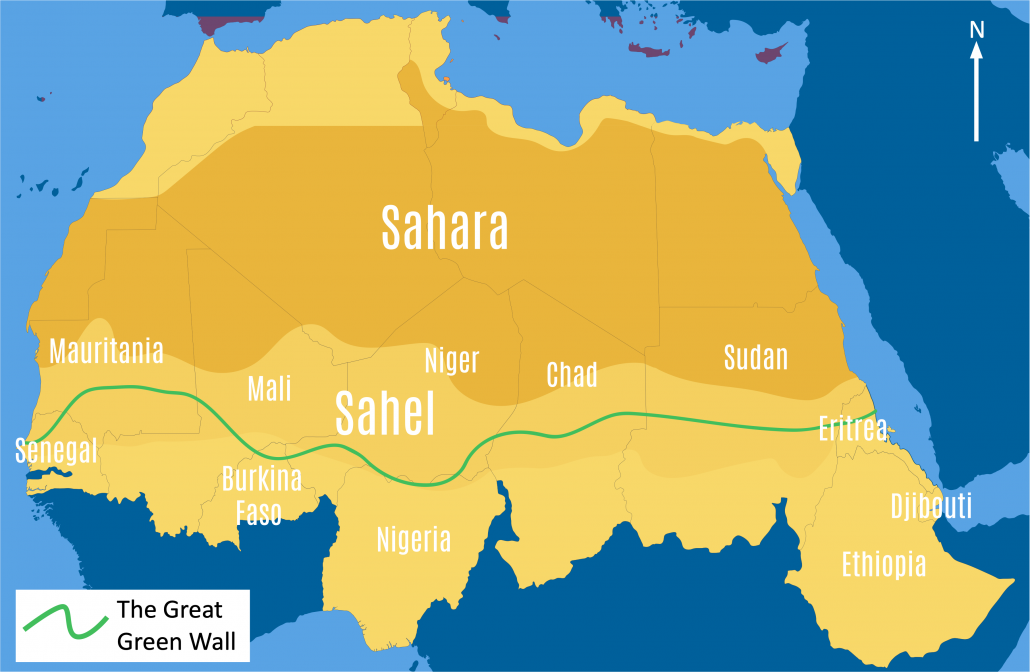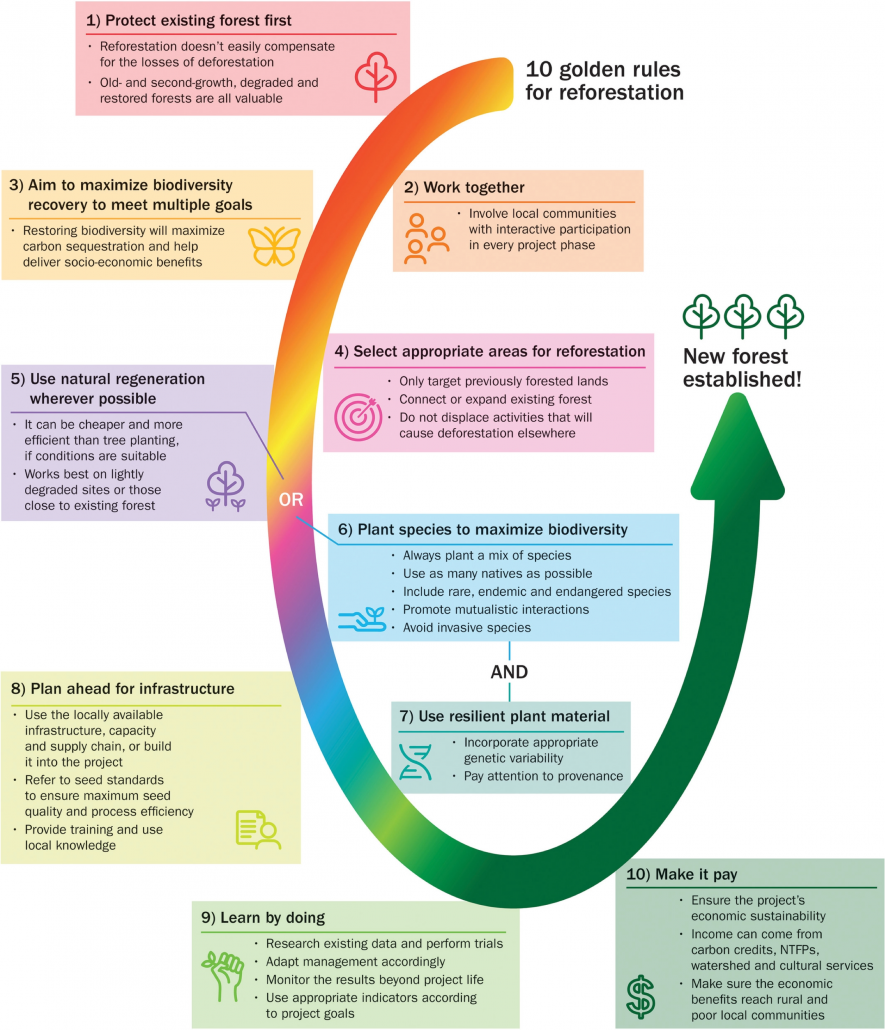Ten Golden Rules for Tree-Planting
Scientists have proposed ten golden rules for tree-planting, which they believe is a top priority for all nations this decade.
Experts from the Royal Botanic Gardens, Kew say that planting trees is a brilliant solution to tackling climate change and protecting biodiversity; however, the wrong tree in the wrong place can cause more harm than good.
Forests are essential to life on Earth. Not only do they provide habitats to three-quarters of the world’s plants and animals, but they also offer food, fuels and medicines as well as soaking up carbon.
However, forests are disappearing at an alarming rate. An area of pristine tropical rainforest the size of Denmark is lost every year.
Reforestation, the restoration of forests that have recently been lost, could protect biodiversity and help fight global climate change by removing huge amounts of carbon dioxide from the atmosphere. There is a range of ambitious tree-planting projects happening around the world to replace lost forests.
The UK Government aims to plant 30,000 hectares (300 sq km) of new forest every year by the end of this parliament.
There is an ambitious project in Africa to grow a green wall of trees spanning 5000 miles (8,048km) across the entire continent, from east to west. The project, which will become the largest living structure on Earth, will help fight the climate crisis and combat desertification.
Planting trees is an essential solution to protecting biodiversity and combatting climate change. However, the process is surprisingly complex. The right trees have to be planted in the right place, if not it can cause more damage than food.
Natural forests, containing a wide range of plants, animals, and fungi, are often replaced by commercial plantations where trees are harvested after a few decades. Afforestation is more effective when people try to recreate forests similar to natural forests and provide benefits to people, the environment and nature, and capturing carbon.
A recent review led by Kew scientists and Botanic Gardens Conservation International (BGCI) proposes ‘ten golden rules for reforestation’ to boost benefits for people and the planet. The rules are:
- Protect existing forest first
- Work with local people
- Maximise biodiversity recovery to meet multiple goals
- Select the right area for reforestation
- Use natural forest regrowth wherever possible
- Select the right tree species that can maximise biodiversity
- Make sure the trees are resilient to adapt to a changing climate
- Plan ahead
- Learn by doing
- Make it pay
An overview of each rule is summarised in the diagram below.
Further details of each step are available on the Kew Gardens website.
Further reading
10 Golden rules for restoring forests – RBG Kew
Support for Geography in the News Assignment
Describe the distribution of forest change shown on the choropleth map
This question is asking you to describe the distribution (spread) of forest change shown on the choropleth (shading) map. As this is an interactive choropleth map you can click on the colours in the scale to highlight the patterns. Describing patterns on a choropleth map is easy using the TEA tool as it provides a structure to your answer. TEA stands for trend, examples and anomalies.
Trend
To begin with, it is useful to include an opening statement about the general distribution (pattern/spread) shown on the map. You could do this by asking yourself does the choropleth map show the global annual change in forest area in 2015 even or uneven?
Paragraph starter: The global annual change in forest area in 2015 is even/uneven.
Examples
Next, you need to discuss the patterns on the map giving examples. You could consider:
- What continents/countries are experiencing a decline in forest area?
- Are the countries mainly HICs, NEEs or LICs?
- Are they near the equator or further away?
- Are they inland or coastal?
- What continents/countries are experiencing an increase in forest area?
- Are the countries mainly HICs, NEEs or LICs?
- Are they near the equator or further away?
- Are they inland or coastal?
Anomalies
Finally, consider any patterns/examples that stand out. In this example, are there any HICs (wealthy countries) that are experiencing high levels of decline in forest cover – top tip – check out North America!)? Are there any LICs/NEEs that are experiencing high levels of forest cover increase (have a look at Asia!)?






Leave a Reply
Want to join the discussion?Feel free to contribute!